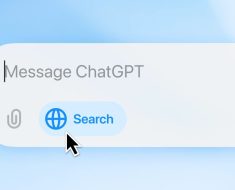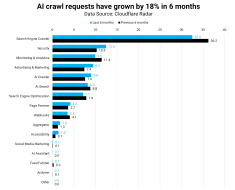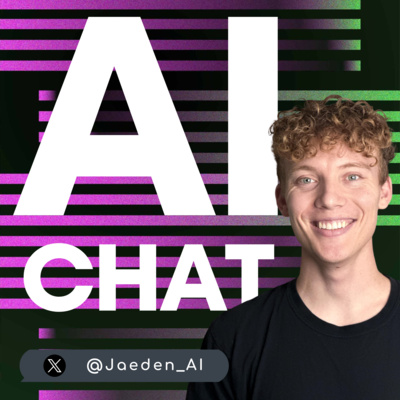
As a kid, I often found myself daydreaming about what the future will look like. Will we have flying cars? Shoes that can glide? Teleportation?
Well, the future is here, but almost none of the things in my imagination are near completion. The one thing that feels ripped out of sci-fi films that’s here now is definitely artificial intelligence, but it does come with a pretty big asterisk.
We are a few years into the age of generative AI and one thing is for certain: schools aren’t well-equipped to handle this new technology. Many are left scrambling for answers and some have turned to using detectors that have been proven, time and again, to be unreliable.
So, what should teachers actually do? That’s what I’m here to answer in this article.
Is There Space For AI in Classrooms?
Here’s a truth that most people don’t realize: AI has already made its way into our daily lives even before ChatGPT and your pick of today’s most popular LLMs. From Siri to targeted ads in social media, it’s everywhere. This includes the lives of students inside and outside the classroom.
Some educators might skip to the end and decide that completely banning AI in education is the right way to go. But, in all honesty, it’s probably not realistic or beneficial in the long run. Instead, we need to find ways to integrate AI to enhance learning rather than undermine it.
So, the answer is yes. There is definitely space for AI in classrooms.
Students and teachers alike benefit from AI. Teachers can use it to create engaging lesson plans or to grade routine assignments. Students can also use it to get step-by-step explanations for math problems, generate ideas for creative writing projects, and even as a conversation partner for language learning.
But despite all the benefits, it all boils down to a single question: how do we ensure AI doesn’t become a crutch? We don’t want students simply copying AI-generated answers without understanding the underlying concepts. The challenge lies in using AI to support critical thinking, not replace it.
Is It Realistic To Go Back To Papers?
So, let’s ditch the computers and return to good old paper and pencil. At first glance, this might seem like a foolproof plan. After all, AI can’t write on paper, right?
Nope. In fact, I think this solution is too short-sighted.
Let’s take a step back and consider the practicality of this approach. As time continues to turn, computer literacy becomes more of a necessity and less of an asset. By removing technology from classrooms, we are doing students a disservice.
There’s also the fact that, since the pandemic, many schools have invested heavily in digital infrastructure. Interactive whiteboards, computer labs, and tablets are now common in many educational settings. Abandoning these resources would be not only wasteful but also expensive.
And those who are suggesting this solution are forgetting one crucial fact: LLMs did not invent cheating. The core issue that institutions must solve isn’t the method but the reason why students are cheating.
How Should Teachers Actually Use AI Detectors?
When OpenAI, the company behind ChatGPT, openly claims that AI detectors are unreliable, it should be seen as a signal flare that maybe this isn’t the right way forward. But still, teachers continuously take AI likelihood scores as gospel. The problem with this is that innocent students are paying the price because of false positives.
So, how should teachers actually cope with AI abuse? There’s two ways.
Number one should be to always use AI detectors as additional evidence and not the crux of your accusation. There are multiple ways of figuring out whether or not an essay was generated using an LLM. You can also ask a student for evidence once you confront them with an accusation. The most important thing is to make them feel safe and that you’ll protect them if it turns out to be a false positive.
Teachers can also focus on creating “AI-proof” assignments. This means crafting questions and projects that require personal experiences, in-class knowledge, latest information, or original analysis. These are areas where AI still falls short and are prone to hallucinations, which are much easier to spot and prove without a shadow of a doubt.
What Teachers Need To Keep in Mind Regarding AI Misuse
When addressing AI misuse, you need to consider the underlying reasons why students might turn to these tools. More often than not, it’s not just about taking shortcuts. Students might be struggling with the material, feeling overwhelmed, or dealing with time management issues.
Simply punishing students for using AI won’t address these root causes. Instead, teachers should open up conversations about AI use. Discuss its benefits and limitations openly. Help students understand why developing their own thinking and writing skills is important for their future success.
Your goal as a teacher should be creating a classroom culture that values original thought and creativity. When students see the intrinsic value in their own ideas and perspectives, they’re less likely to rely on AI as a crutch.
How Can Teachers Thrive Alongside AI?
AI shouldn’t be seen as a threat to education, but a tool that can make learning better. Here are some of my favorite use cases of AI in learning institutions:
- Automate routine tasks: Use AI to handle grading of multiple-choice tests or to check for basic grammar errors in essays.
- Enhance lesson planning: Employ AI tools to generate creative lesson ideas.
- Facilitate collaborative learning: Use AI platforms that help students to work together on projects, even when physically apart.
- Foster critical thinking: Design assignments that require students to evaluate AI-generated content, encouraging them to think critically about information sources.
- Embrace adaptive learning: Use AI-powered educational platforms that adjust difficulty levels based on student performance.
- Improve accessibility: AI tools can create more inclusive classrooms for less-abled students.
What Now?
I’m not a betting man, but if I were, I’d bet my life that the path forward isn’t about fighting against AI, but learning to work alongside it. We need to equip students with the skills to use AI responsibly and effectively, while also teaching them to think independently.
But don’t worry — the role of teachers will always be there, but it may evolve. Rather than being the primary source of information, teachers may become facilitators of learning and the ones who’ll nurture the younger generation in this new age. They’ll provide the human connection, empathy, and understanding that no AI can replicate.
Despite how bleak the future may seem, the goal of education remains unchanged: to prepare students for their future. By purposefully integrating AI into our teaching methods and establishing clear guidelines for its use, we can transform AI from a perceived threat into a valuable ally.
The classroom of tomorrow might look different from what we’re used to, but the essence of learning will always be human. Nothing will change that fact.
Interested in learning more about AI’s role in learning? Hear from teachers in this article.





